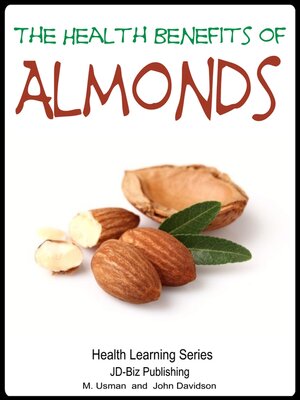
Sign up to save your library
With an OverDrive account, you can save your favorite libraries for at-a-glance information about availability. Find out more about OverDrive accounts.
Find this title in Libby, the library reading app by OverDrive.



Search for a digital library with this title
Title found at these libraries:
| Loading... |
Health Benefits of Almonds
Table of Contents
Getting Started
Chapter # 1: Intro
Chapter # 2: Nutritional Worth
Chapter # 3: Selection & Storage
Health Benefits
Chapter # 1: Lowering Cholesterol
Chapter # 2: Defense against Diabetes & Cardiovascular disease
Chapter # 3: Improves Blood Fats Levels
Chapter # 4: Weight Loss
Chapter # 5: Normalizes Eating Habits
Chapter # 6: Live Longer
Recipes
Chapter # 1: Candied Almonds
Chapter # 2: Sugar Spiced Almonds
Chapter # 3: Garlic & Rosemary Roasted Almonds
Conclusion
References
Getting Started
Chapter # 1: Intro
Uniquely delicious, almonds have been known to man as the epitome of health & well being for centuries. Their health benefits have been documented with the passage of time and are now being tested in the light of modern scientific researches; looking at the results of these researches, there is a good reason why you should consider reading the rest of the book!
A stalwart nut in cakes, puddings and other sweat dishes, almonds have been on almost every household's shopping list. With respect to freshness, they are always preferred to hazelnuts & walnuts and their slow rate of rancidity makes them a food item that can easily tolerate the back of a storage cupboard. Their neutral, nutty and crunchy taste upon baking makes them irresistibly delicious and in no time can you nibble your way through every almond in front of you.
But what are the origins of this super-delicious and nutritious food? Almond is actually a species of trees, belonging to the genus Prunus, which are indigenous to the South & Middle East region of Asia. The almond plant is widely cultivated for its edible seed, also known as almond. The almond tree is a deciduous one and grows 4-10 m in height; it has a trunk of diameter 30 cm. The twigs when young are of green color but become purplish as soon as they are exposed to sunlight. In the second year the twigs become grey and the leaves grow 3-5 inches long. The flowers are characterized by white to pinkish color, 3-5 cm diameter and usually consist of 5 petals. The fruit matures in the autumn, about 8 months after flowering but still for an economic bearing, one more year is required. The fruit is about 4-6 cm long and in specific terms is not exactly a nut, but rather a drupe. A drupe is a fruit in which an outer fleshy part surrounds a shell containing a seed but instead of being fleshy the outer part of the fruit is thick and leathery in texture. Inside this hull is a hard, woody shell which packs the edible seed known to many as almond. The seed acquired from the woody shell is covered by a thin brownish skin, which when pealed reveals the inner color of almond; i.e. off white. Almonds can further be categorized into two types:
i.Sweet Almonds
ii.Bitter Almonds






